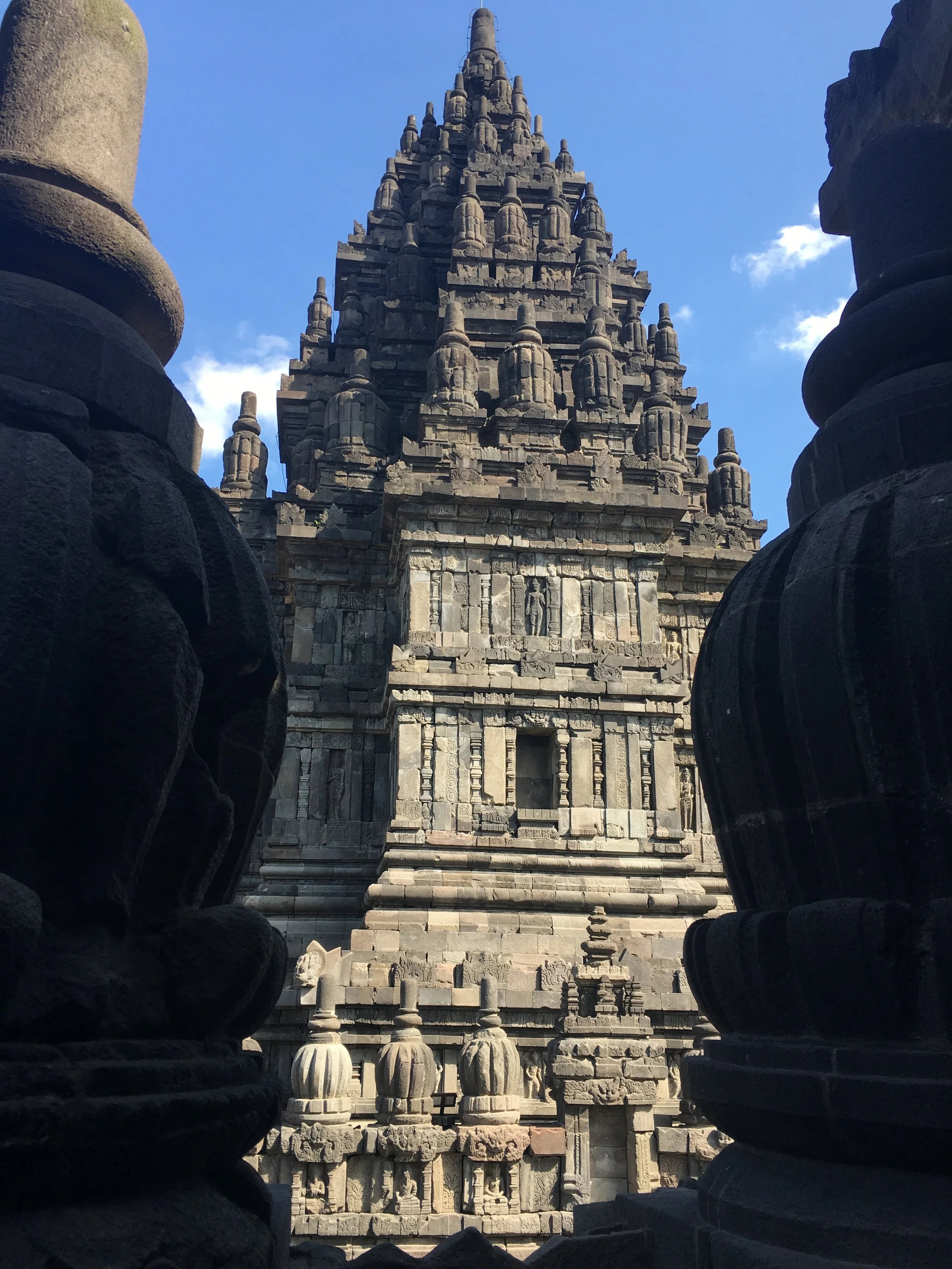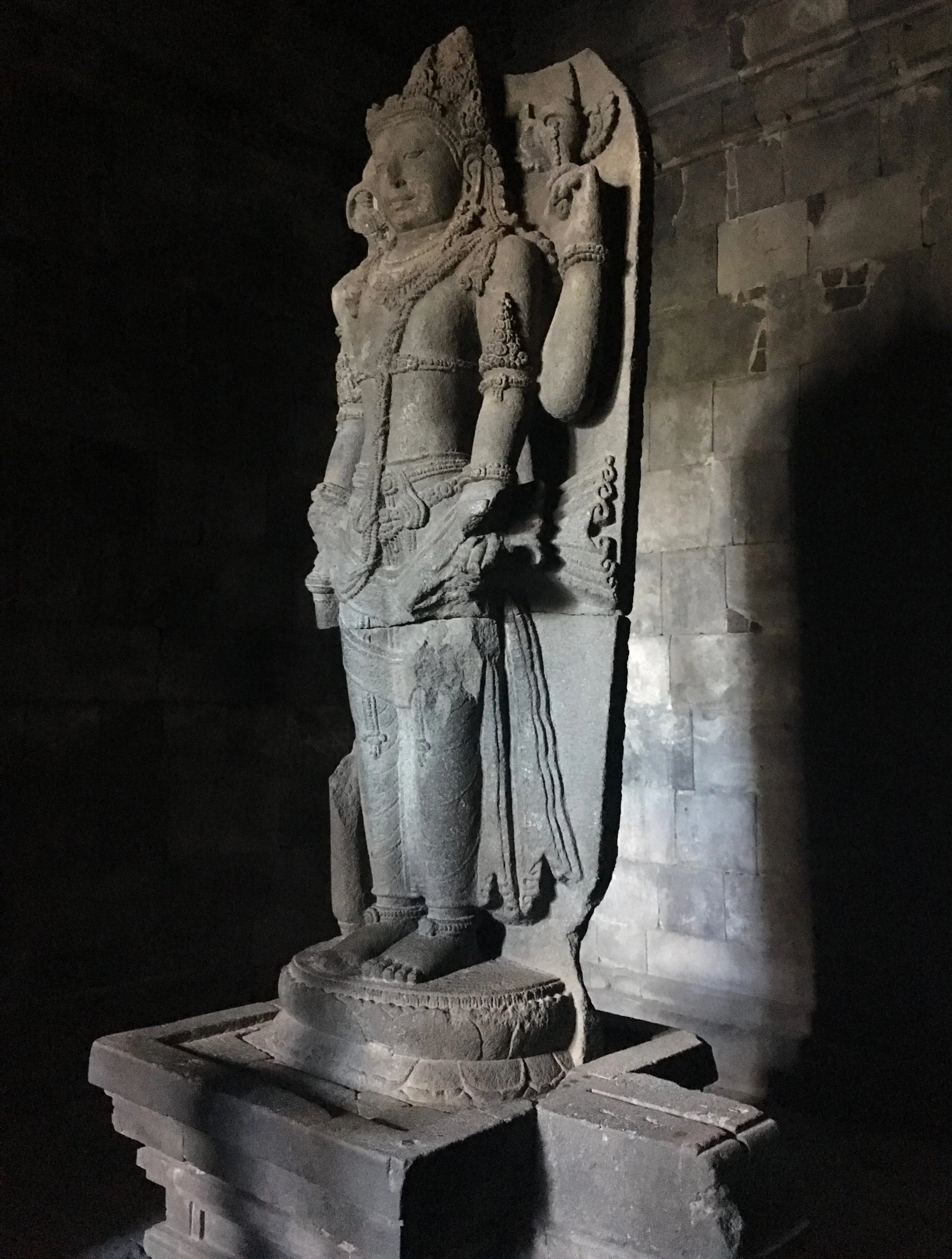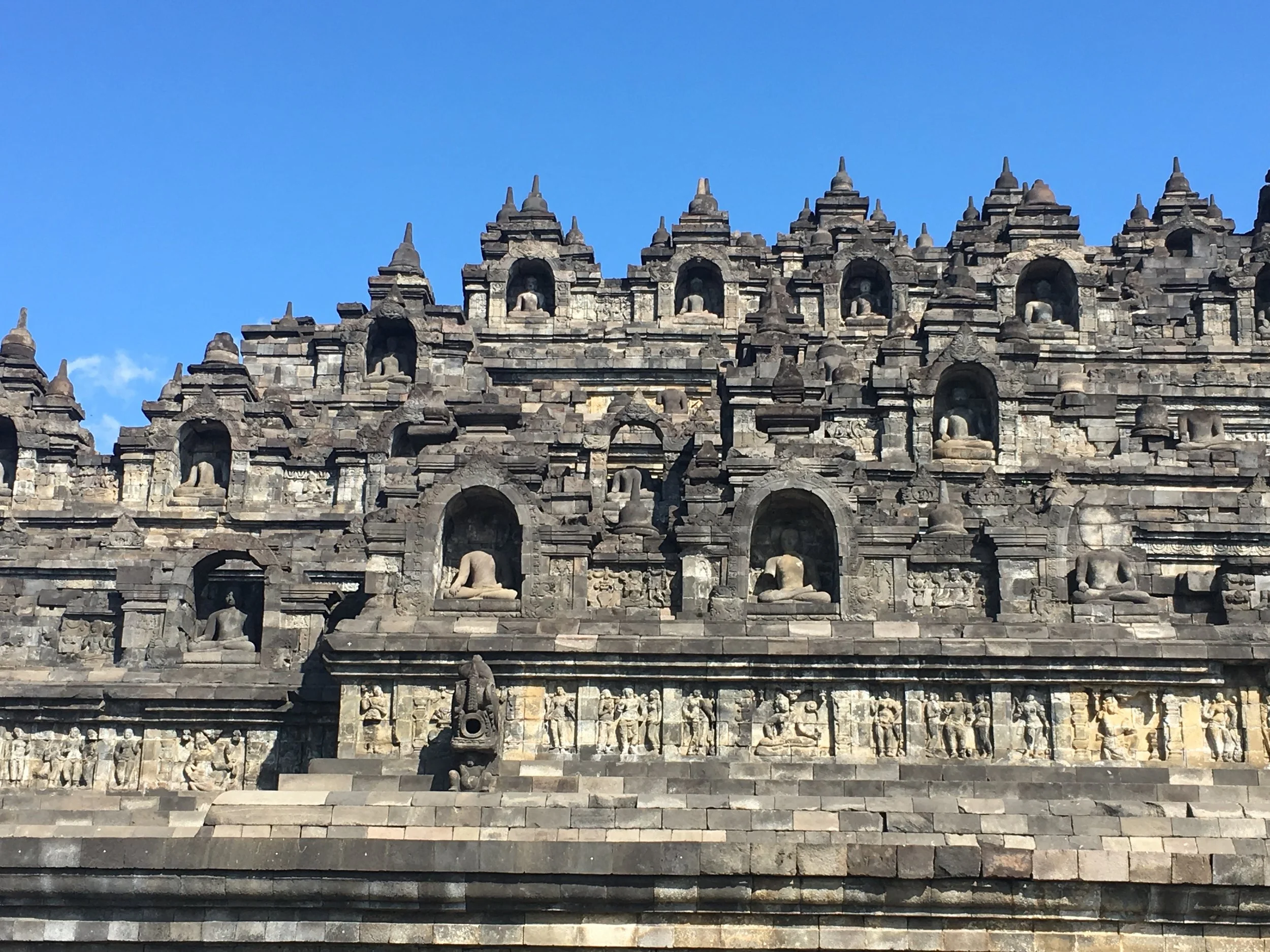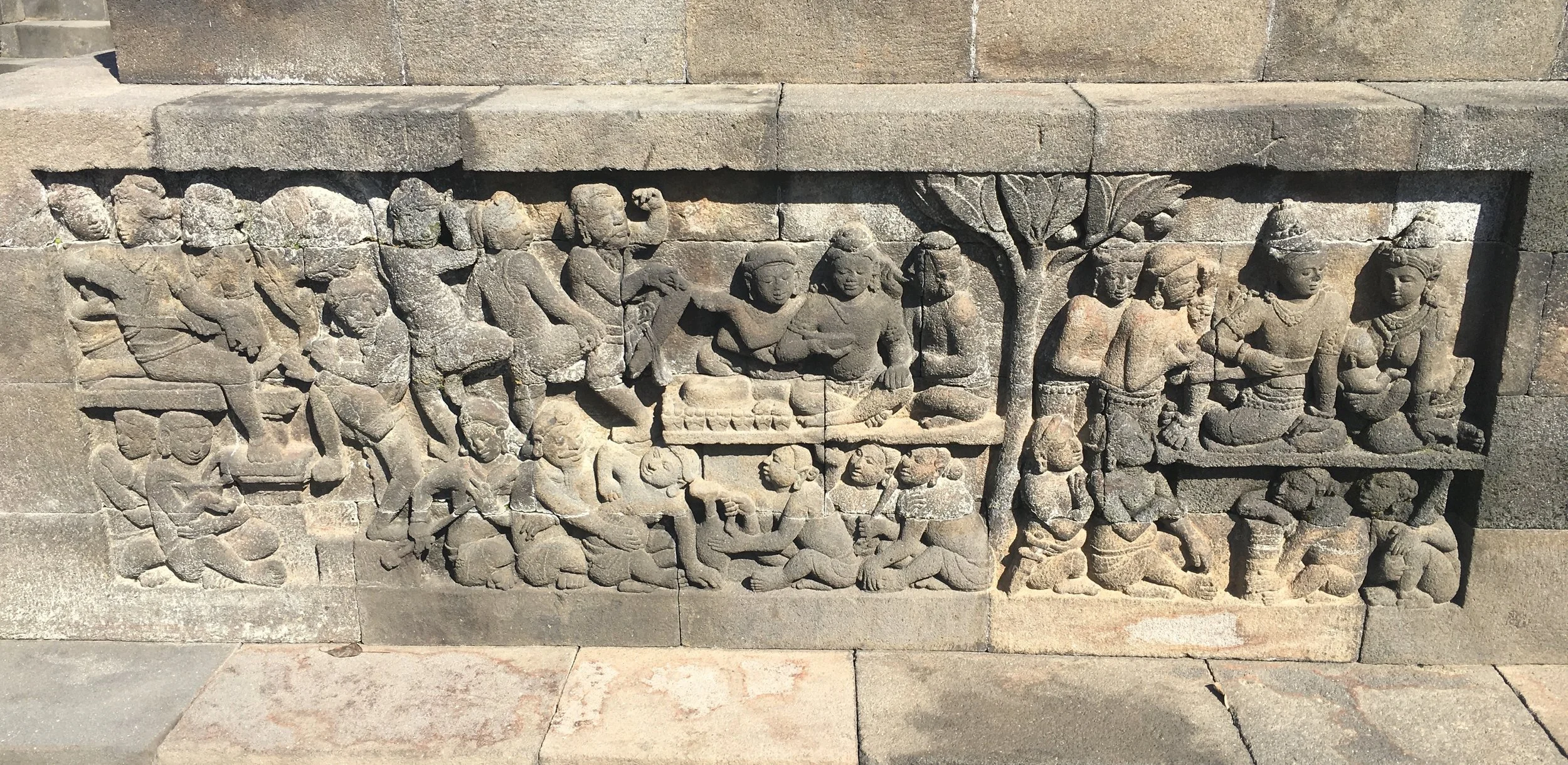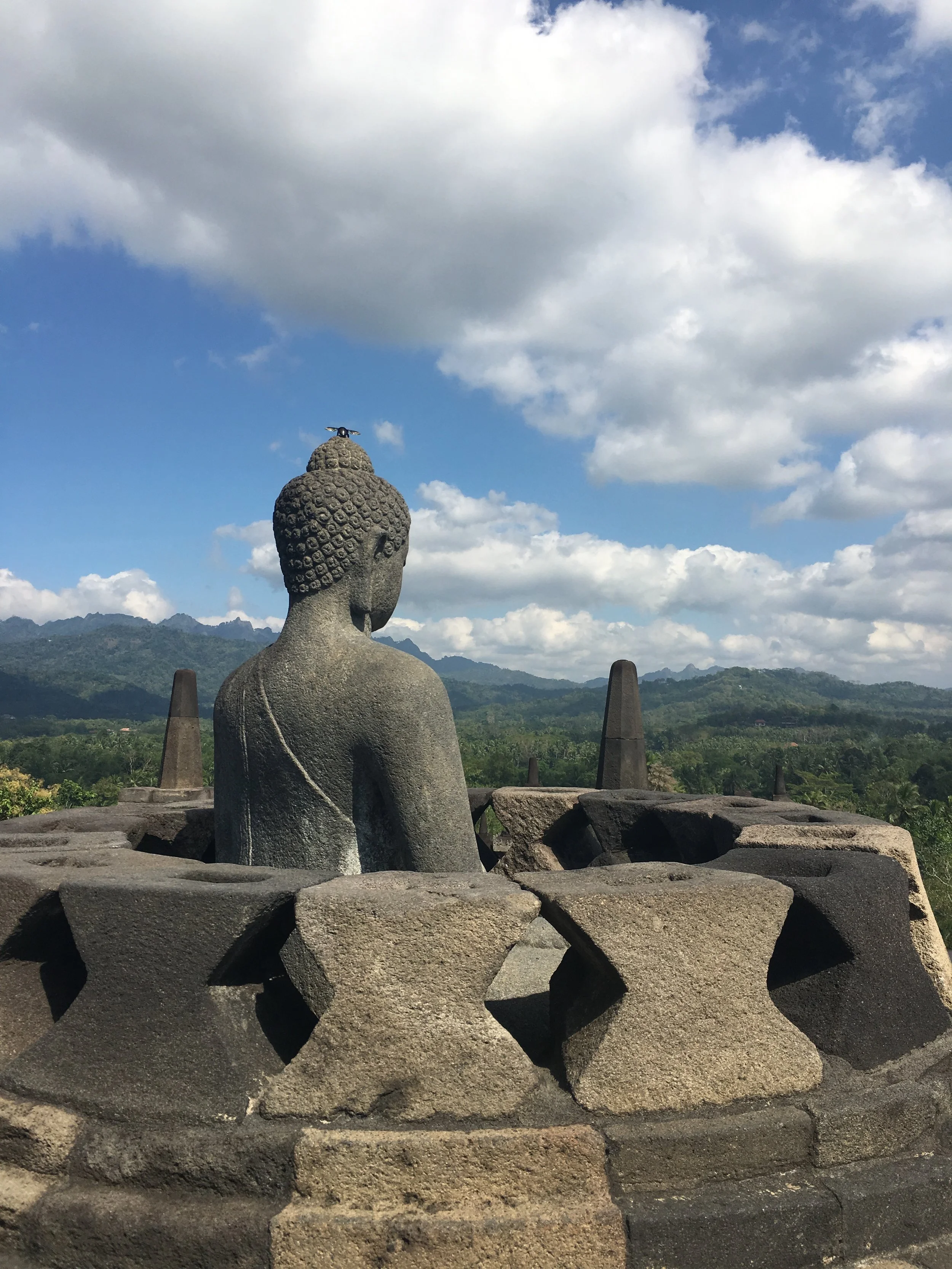"The princess agreed to marry the prince if he completed a thousand temples in one night. By summoning a horde of demons, the prince completed 999 temples before the cock crowed. When the princess refused her hand, he turned her to stone and she became the 1000th statue."
How utterly unreasonable. The princess had been perfectly clear in her demands. The prince had failed to deliver. She had every right to refuse her hand in marriage.
"Ah, but the prince felt she had never truly loved him!" the temple guide insisted in response to my protests.
I remained unconvinced. If a man couldn't even be relied upon to finish 1000 exquisite pieces of art in a night, could you even trust him to do the dishes?
"Perhaps this will help?" Our small group had been followed around by three locals, who I guessed were training to be guides for future tours. One of them approached me and held out his phone, on which the Javanese legend of Roro Jonggrang was outlined in English.
Roro Jonggrang was a princess whose kingdom was invaded by Bandung Bondowoso; the prince of a neighbouring land. (Feasibly, her father may have been a horrifying brute who started the whole thing, but he was now dead and she was beautiful and that was all that really mattered. At least to Bandung Bondowoso.) Enraptured by her beauty, Bandung Bondowoso proposed marriage whereupon the princess gave him the ultimatum involving the thousand statues and nighttime.
Feasibly, this might have been a warning sign that she just wasn't that into him. The ole' build-a-thousand-statues-in-a-single-night line that became 'yeah, I'll call you' a thousand years later.
The backboard represents the penis on the god statue, while the slit in the block on the lower right is the vagina.
That aside, Bandung Bondowoso didn't take the hint. The man had just murdered the father of a beautiful woman and marched on her land. How could she honestly resist him? Conjuring a multitude of demons and orchestrating some serious delegation of duties, the prince completed 999 statues. Seeing a whole lot of temple cleaning in her future, Roro Jonggrang roused the palace early and convinced everyone to go about their morning chores. The action caused the cocks to crow an hour earlier, ending the official night and Bandung Bondowoso a temple short of a marriage contract.
OK, so I admit she maybe did ask for it.
According to legend, the stone princess became part of the three main temples in the Hindu Temple of Prambanan in Indonesia.
Built nearly 1200 years ago, Prambanan is a UNESCO World Heritage Site and the largest Hindu temple in Indonesia. The temple is really a complex of 240 individual smaller temples, with the central three dedicated to Vishna (the Preserver), Brahma (the Creator) and Shiva (the Destroyer and where our stone princess friend hangs out).
Fornacating monkeys.
Based on the descriptions of our tour guide, I made one important conclusion about Hinduism:
It is principally about sex.
The major statues of the gods in each temple have a rigid backboard that allegedly represents the penis and a deep groove running through a stone protrusion at their base for the vagina. Either this was genuine central symbolism to the religion, or our guide needed help with many unresolved issues. I honestly might have suspected the latter if it weren't for the fornacating monkey carving on another of the temples.
An earthquake in 2006 seriously damaged Prambanan and many of the smaller temples still sit as rubble. Painstaking repair work remains underway to restore the site. It is an effort that emphasises what a mind boggling undertaking this must have been in the 9th Century; a breathtaking achievement only outstripped by one fact...
... there's another one down the road.
Borobudhur Temple.
Just the other side of Yogyakarta sits Borobudhur; a Buddhist temple of the same awe-inspiring grandeur as Prambanan. It is described in Indonesian travel guides as a 'wonder of the world' but does not seem to be on the current lists. Not that this matters: the temple is one of the greatest Buddhist monuments across the globe, another UNESCO World Heritage Site and has over 500 Buddha statues.
Looks like fun? Yeah. Stays on level 1.
Borobudhur exceeds Prambanan's age by less than fifty years. Built in the mid 800s, both relics are around 300 years older than Cambodia's Angkor Wat, although not as large. There are no written records of why these temples were constructed. Indeed, despite their substantial size and proximity to a thriving Javian city, both were forgotten about and became covered in jungle foliage and ash. They were formally rediscovered --tomb raider-style-- in the 1800s while Java was under British rule. Despite the lack of a handy paperwork trail, it is probable that both temples were build to commensurate a change in dynasty in the local region.
Our guide explained that as you climbed Borobudhur, you moved towards enlightenment. On the lowest level, were the stone reliefs depicting the sinful activities you had to abandon. Drinking, partying and really anything good was left at level 1.
Uncovered stupa to show the Buddha. There is indeed a giant bug on its head.
The next part of the climb takes you through ranks of learning, likely involving extensive lectures on how you shouldn't bemoan all the fun you left behind at the temple base. At the top, is enlightenment. 72 Buddhas are ringed around the summit, each encased in their own bell-jar shaped stupa.
Peering through the diamond shaped lattice work, I could see not all of the Buddhas were whole. Many statues at Borobudhur had been intentionally defaced by the invaders of Indonesia (including the British and Dutch), who took part of the heavy figurines back to their home country. However, the stupas had protected these statues against such raids, but earthquake damage had still resulting in loss of heads, arms and the occasional nose. At least one of the best preserved Buddhas had been more recently freed from its stupa so the intricate carving could be admired. At the very pinnacle of the temple is a final giant stupa, but this is solid all the way through.
Unlike Prambanan, there were less tails of dubious marriage proposals at Borobudhur. This might be because we'd left sex at the bottom on level 1.

